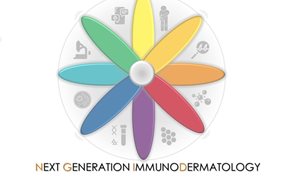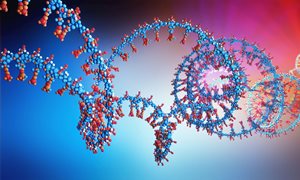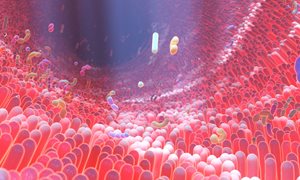 What do the bacteria eat, that live on your skin? Scientists at Radboudumc and Utrecht University have developed a novel computer model to answer this question, revealing that a lot of the food for skin bacteria is derived from beauty and skin care products. The model uses microorganisms’ DNA to determine the metabolites – nutrients and waste products – used and produced by the bacteria in different parts of the human body. Metabolites provide important clues about human health and disease but can be difficult to measure experimentally. The results of their research were published last week in Nature Microbiology.
What do the bacteria eat, that live on your skin? Scientists at Radboudumc and Utrecht University have developed a novel computer model to answer this question, revealing that a lot of the food for skin bacteria is derived from beauty and skin care products. The model uses microorganisms’ DNA to determine the metabolites – nutrients and waste products – used and produced by the bacteria in different parts of the human body. Metabolites provide important clues about human health and disease but can be difficult to measure experimentally. The results of their research were published last week in Nature Microbiology.
Metabolites, such as those that make up one’s body odour, are molecules that are used and produced by living cells such as human cells and bacteria. The human body is increasingly seen as a complex ecosystem, home to thousands of microorganisms and their metabolites. The health of this ecosystem hinges on the relationship between the microbes and human cells and tissues, and metabolites are often the key to this relationship. For example, intestinal tumours cause changes to the metabolite composition in the intestine, which in turn allows certain types of gut bacteria to grow, sometimes exacerbating the tumour.
Difficult to determine
“Metabolites are vital, but it is often difficult to find out which ones are present at a specific site in the body. There are many different metabolites, and their concentrations can vary widely,” explains research leader Dr. Bas Dutilh from Utrecht University. “Since metabolites are so closely linked to the growth of bacteria, we thought that it might be possible to predict their composition based on the types of bacteria present. The only input we need for that is the abundances of the bacteria and their genes, and progress in the field of metagenomics has made it relatively easy to get those.”Surprisingly consistent
Given gene information from the bacteria as input, the computer model simulates the most likely metabolites that the bacteria need to grow. These are found by checking which enzyme each gene encodes, and which metabolites each enzyme uses/produces. The researchers then calculate the concentrations of metabolites that explain the abundances of bacteria observed at a given site in the human body. “The predictions we arrive at in our analyses are surprisingly consistent with what is known about the metabolite concentrations in and on the human body,” explains lead author and PhD candidate Daniel Garza, affiliated with Radboudumc.Applicable to any environment
“We have shown the utility of the computer model for the human skin, mouth, intestines and vagina, because those are fairly well-known areas,” says Prof. Martijn Huijnen from Radboudumc. “But in principle, this technique is applicable to any environment where bacteria live, such as the soil near plant roots.”Beauty and skin care products
The researchers found that many of the substances predicted from skin samples are known to be ingredients of beauty and skin care products, such as myristic acid, a fragrance ingredient that is easily absorbed by the skin. The results also predicted a significant amount of lead on skin, which corresponds to the findings of a previous experimental study. Where the toxic metal comes from, however, is still anyone’s guess. Lead supplement in petrol has long been prohibited in the Netherlands and the United States, where the samples were taken. “It’s still used in some brands of lipstick, but that doesn’t seem to be a likely explanation for the relatively high concentrations found in so many skin samples”, according to Dutilh..
The model in detail
The computer algorithm, called MAMBO (for ‘Metabolomic Analysis of Metagenomes using fBa and Optimization’), works as follows (see figure). (1) First, computer models are created of the metabolisms of more than 1,500 bacteria from the human body. These models record the relationship between the concentration of metabolites in the environment and the growth of each bacteria. (2) The models are used to conduct computer simulations of bacterial growth on an initially random, but well-defined metabolite environment. This produces a predicted profile indicating which bacteria will grow in the selected metabolite environment, and how well they grow. (3) The predicted profile is then compared to an experimental profile, for example one listing the abundances of all the bacteria found in samples from skin or faeces. (4) After simulating millions and millions of environments, the predicted profile that best corresponds to the experimental profile is found. This prediction describes all the bacteria and metabolites that are found and at what concentrations. Thus, the metabolite concentrations in an environment can be predicted by measuring the bacterial genes.-
Want to know more about these subjects? Click on the buttons below for more news.
Related news items

Large NWA ORC grant awarded for national skin research: Next Generation ImmunoDermatology
23 March 2022Research for better treatment methods for chronic skin diseases.
go to page
Christian Gilissen appointed professor of Genome Bioinformatics
22 October 2021 Christian Gilissen has been appointed Professor of Genome Bioinformatics at the Radboudumc / Radboud University as of 1 October 2021. go to page
Sonlicromanol seems promising for certain cancers Khondrion announces publication in PLOS ONE of new research
13 July 2021 Khondrion announces publication in PLOS ONE of new research showing normalisation of prostate cancer stem cell mPGES-1 overexpression and inhibition of cancer spheroid growth by sonlicromanol’s active metabolite. go to page
Newborn screening in sight through the discovery of novel disease biomarkers by new technique
8 July 2021New biomarkers that can be used in the newborn screening protocol, also known as the neonatal heel prick, Karlien Coene and colleagues joined forces with scientists at the Radboud University’s FELIX laser laboratory. They published their findings in The Journal of Clinical Investigation.
go to page
Next Generation cytogenetics is on its way Does Optical Genome Mapping turn cytogenetics upside down?
7 July 2021 Dutch-French research shows that Optical Genome Mapping (OGM) detects abnormalities in chromosomes and DNA very quickly, effectively and accurately. go to page
